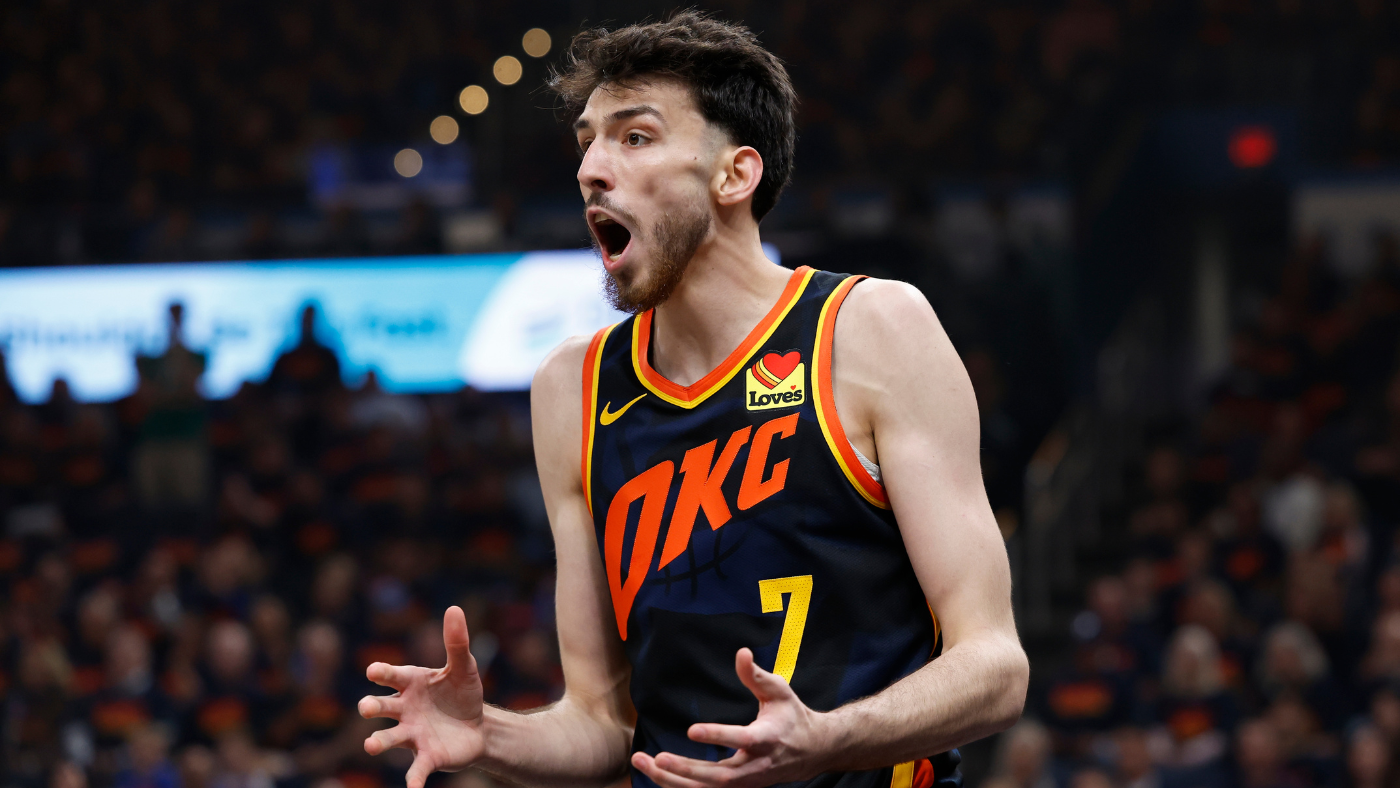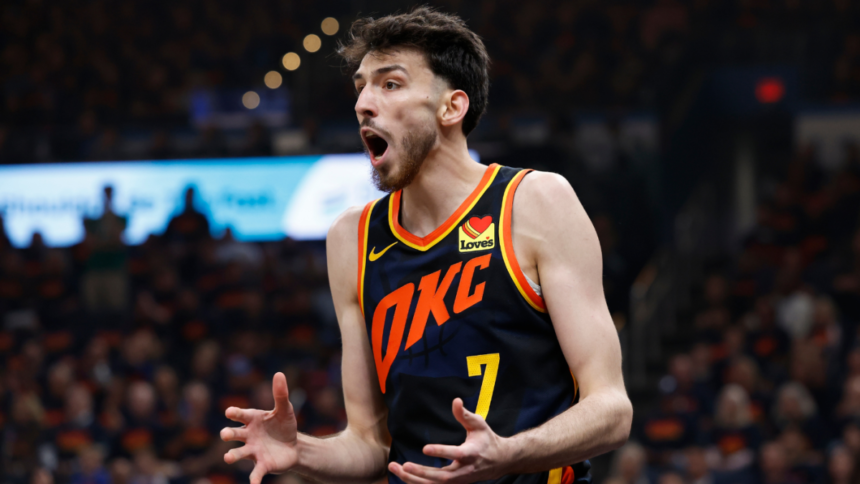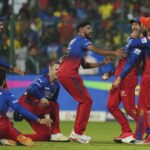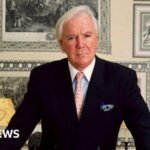
The Oklahoma City Thunder have always preached patience. It’s a core tenet to how they’ve conducted this largely successful rebuild, and it’s a message general manager Sam Presti has done his best to sell an eager fanbase. “I’m not trying to dismiss everyone’s excitement, but we’re not a .500 team,” he told ESPN’s Tim MacMahon in November. “We have to finish our breakfast before we start acting like we’re on the cusp of something.”
It was an ironic turn of phrase considering the season ended with the Dallas Mavericks more or less stealing their lunch money. The newly minted Western Conference finalists dominated Oklahoma City physically, killing them on the boards and all but walling them out of the paint. The two centers that led the charge for the Mavericks, Dereck Lively II and Daniel Gafford, both made it to Dallas with a bit of Presti’s help. The No. 12 pick that Dallas used on Lively originally belonged to the Thunder before they traded up to No. 10 and selected Cason Wallace. Dallas gave the Thunder a 2028 first-round pick swap in exchange for the first-round pick they needed to send Washington in exchange for Gafford.
These were by no means bad moves. Wallace had a sensational rookie season in his own right and played well in the playoffs. Oklahoma City has such a surplus of first-round picks that turning spares into swaps creates extra upside while also solving future roster-crunch issues. Pretty much every move Presti makes is defensible in the context of his long-term plan. This series was just a helpful reminder of the benefits of the occasional risk. The Mavericks drastically improved their roster at the deadline by acquiring Gafford and P.J. Washington. The Thunder were content to eat their breakfast before thinking about lunch, so the Mavericks swiped this series right out of their refrigerator.
The lessons of this series will ultimately be beneficial for the Thunder. They wanted to see how their young team would respond to the postseason pressure cooker. They learned that nobody is going to guard Josh Giddey. They now know that their current group can’t overcome their rebounding vulnerability as easily in the postseason as they did in the regular season. Chet Holmgren and Jalen Williams weren’t ready this time around. Maybe they will be in a year. All of this is useful data, but it’s time for the Thunder to apply it in some meaningful way.
Oklahoma City fortunately doesn’t need to be as aggressive about it as Dallas was. The Thunder have far more draft capital to trade and far fewer financial commitments burdening them. They don’t need to remake their team. They only need to tweak it, and there are fairly straightforward ways they can go about doing that.
The Thunder have a two-year financial window to make additions and evaluate fits alongside their core before things start to get tight. Oklahoma City is looking at around $35 million in cap space this offseason. Assuming they don’t plan to re-sign Giddey to an expensive extension, they could fairly comfortably have significant cap space in the summer of 2025 as well. But that is also when Holmgren and Williams become extension-eligible. Those deals, which we can presume will be at or near the max, will kick in for the 2026-27 season. In other words, the Thunder have two cheap years left before they get expensive.
That makes building an offseason plan relatively straightforward: they can sign free agents to one- or two-year deals, or they can trade for players that have two or fewer years left on their contracts. In all likelihood, though, they are not looking to add money that overlaps with new Holmgren and Williams deals. They may decide to keep whoever they add now, but why lock yourself into that decision two years out? Given the physicality issues Dallas posed, the idea here will be to find size with a short, balloon payment rather than a hefty, long-term deal.
There’s a very poachable target available under exactly those terms: New York Knicks center Isaiah Hartenstein. The Knicks are limited to an offer starting at roughly $16.2 million by their Early Bird Rights. The Thunder obviously have the capacity to offer much more than that, and in doing so, they may be able to talk Hartenstein into a shorter deal.
It’s a better theoretical fit than a practical one unless the Thunder make other changes. Oklahoma City’s preference has to been to maximize shooting in all lineup constructions. Hartenstein doesn’t shoot 3’s. Could the Thunder compromise on such an addition if they move Giddey, and therefore no longer have to compensate for his poor shooting? Hartenstein’s floater game represents a weapon the Thunder would have loved to have deployed against Dallas. His rebounding speaks for itself, and his passing and screening can at least help other shooters. He’s been comfortable as a backup in the past, a useful note for a Thunder team that probably doesn’t want to move Holmgren fully out of his starting center slot.
Clint Capela brings similar things to the table. He doesn’t have Hartenstein’s floater or passing, but he’s a much fiercer rim-runner on an expiring contract. The Hawks are currently slated to pick No. 1 in the NBA Draft, and they are expected to take French center Alex Sarr. That would render Capela redundant, but he remains a starting-caliber big man that would be a major change of pace for the Thunder in a smaller role.
Jarrett Allen would be a ritzier addition. He’s a former All-Star that would surely cost a hefty package of draft picks. He’d have to start, whereas Capela and Hartenstein would be easier to sell on reserve roles. But he only makes $20 million per year for the next two seasons, and if any team has the capital to splurge like this, wouldn’t it be the Thunder? Worst-case scenario, he’s eminently flippable.
It doesn’t even necessarily have to be a center. Is their version of P.J. Washington, a big-bodied wing that has underperformed on a bad team, out there somewhere? Could that be Kyle Kuzma? De’Andre Hunter? Both of them have long-term contracts to contend with. If the Thunder want to shop in a cheaper bin, they could always go the redemption route and try to fix Tobias Harris. Before you laugh, remember, they pulled that trick off with Chris Paul and Al Horford.
The specifics can be determined based on how the market shakes out. The point is that as much as the Thunder have been built on sustainability, there comes a time in every young contender’s life cycle in which it has to do something to really go for it. Championships aren’t won by accident, and windows close faster than anyone can predict. The Thunder know that from experience. The Kevin Durant-Russell Westbrook window didn’t stay open forever.
Dallas grabbed this series in February as much as it did in May. July is Oklahoma City’s moment to respond. The youngest No. 1 seed in NBA history isn’t exactly far away. Breakfast has been served. Now it’s time for them to make lunch and dinner.







